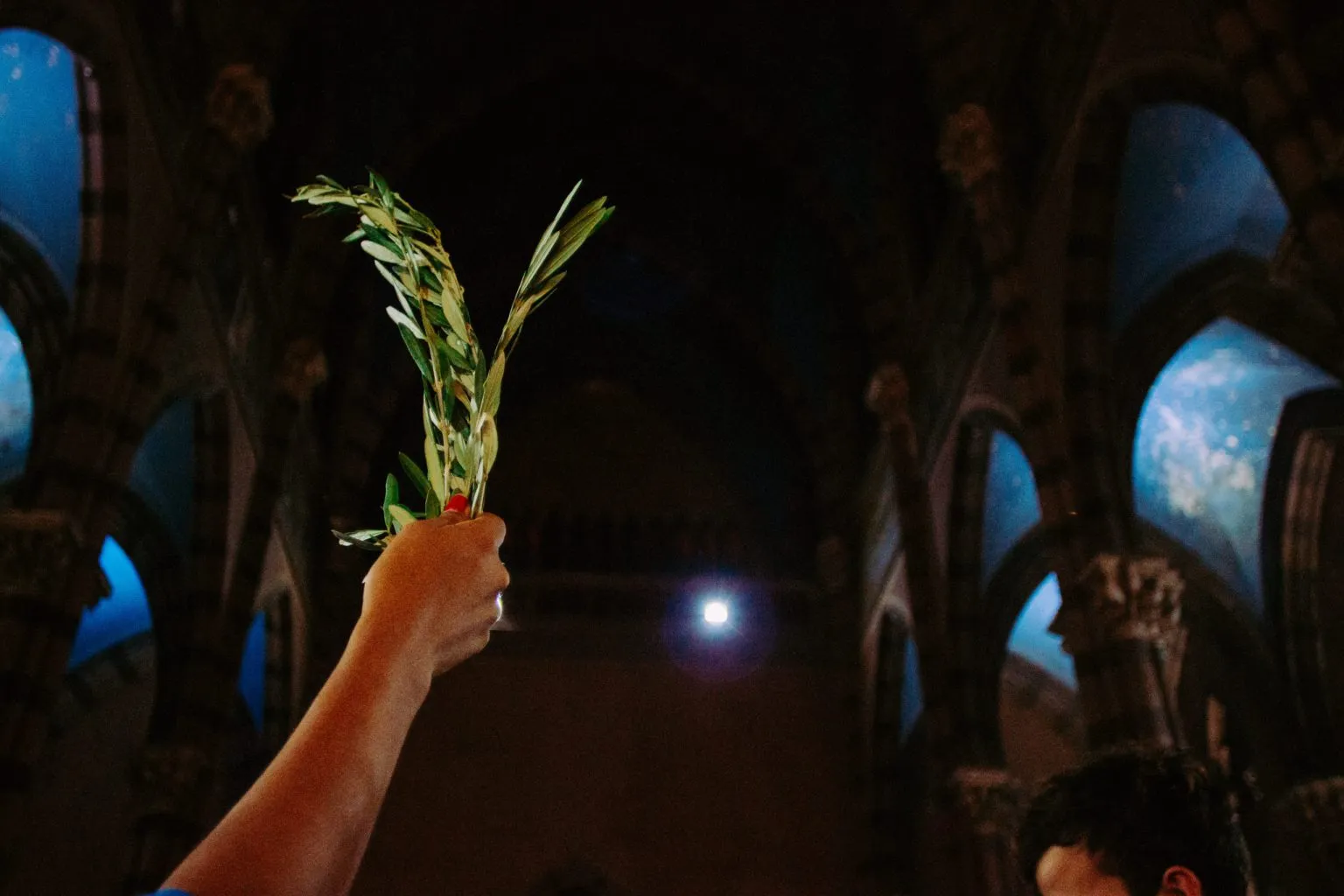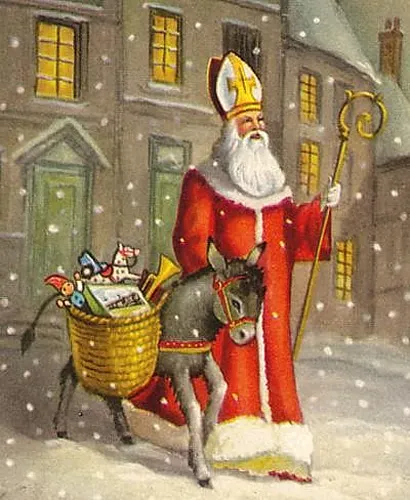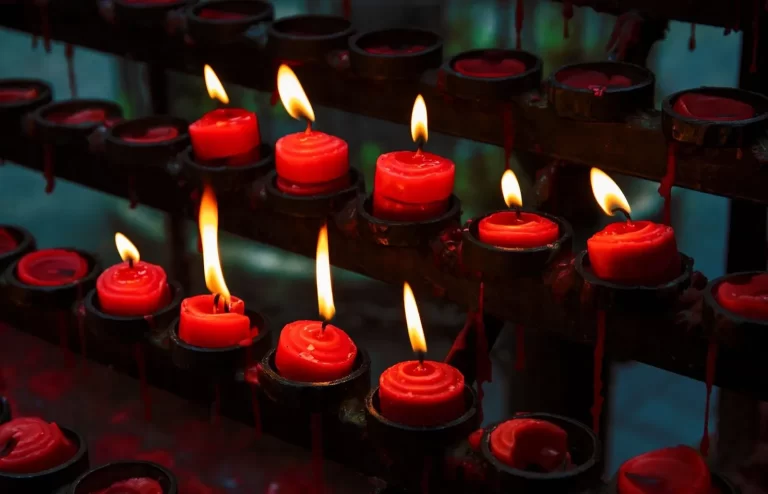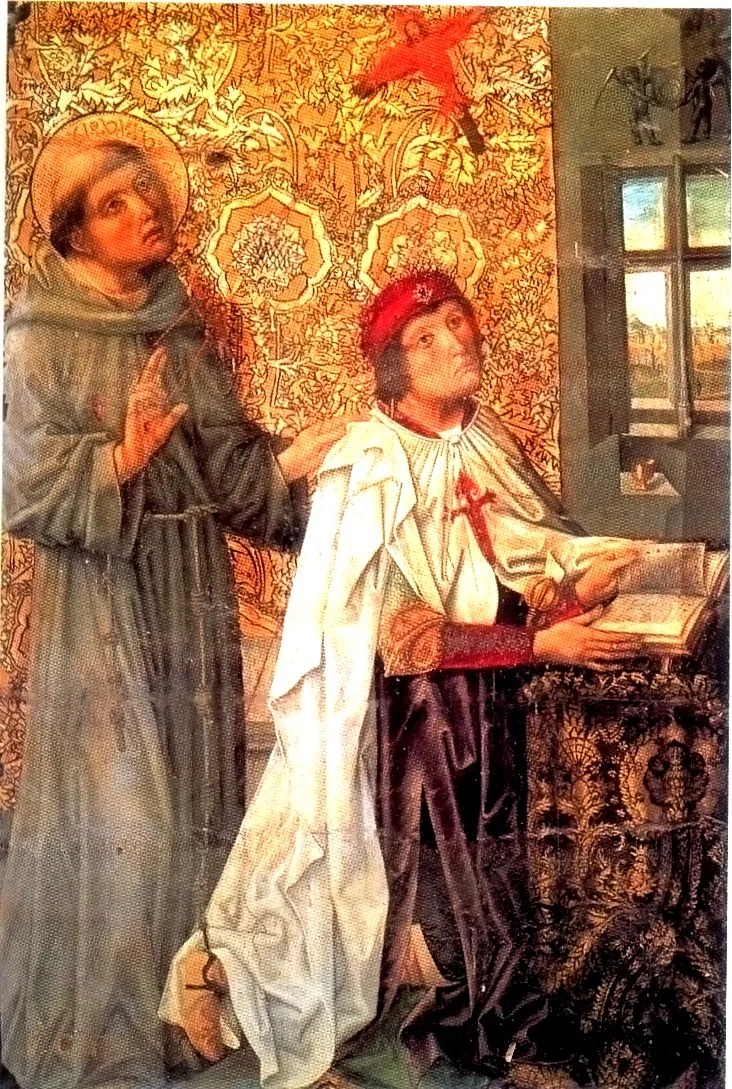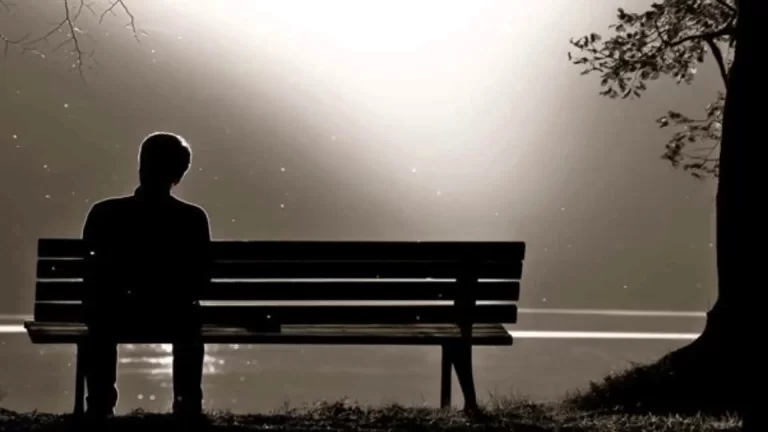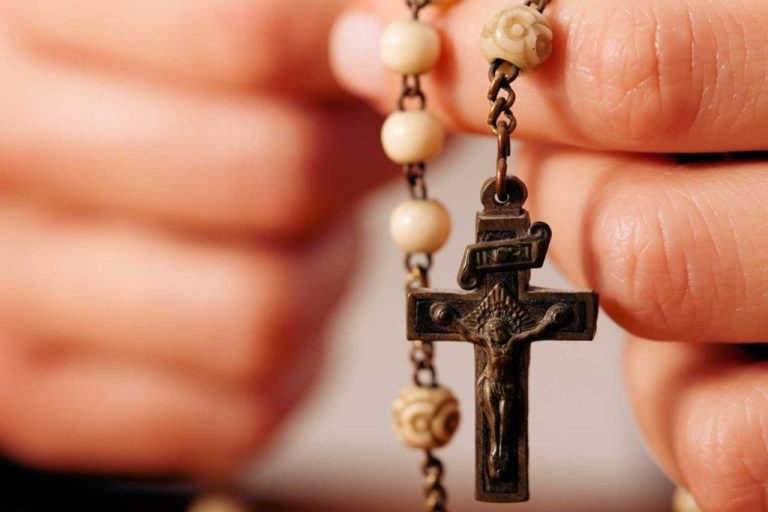What is the Liturgical Year? Summary Meaning
The different and varied celebrations contemplated in the Liturgical Year refer to the experiences of Christ. All the phases from his arrival in the world until his death are recorded in it. Such Christian commemorations have emerged progressively over time, and arise from the desire of the Catholic Church to delve into the various periods of Christ’s life.
What is the Liturgical Year?
The denomination Liturgical Year is the name given to the ordering of the different periods and ceremonies that take place each year in the Christian Churches, as a way of commemorating the history of the Redemption. It is also known as the liturgical cycle, Christian year or year of God
Framed in the liturgical year, various liturgical periods are commemorated with which the episodes of the Holy Scriptures that are disclosed in the acts of worship are linked, the different prayers that are prayed, as well as the liturgical colors used in the attire of the celebrant. It is true that the dates of the festivities may vary somewhat between the various Christian Churches, but the order and logic used for their planning are fundamentally the same.
Whether in the East or the West, the dates of numerous commemorations change every year, generally in accordance with the alteration of the date of Easter (linked in Christianity with the resurrection of Jesus and considered the most transcendental festival of Christianity) to to which a large portion of the mobile festivities is related.
During the Council of Nicaea I (325), all the Churches agreed to celebrate the Christian Easter on the Sunday after the full moon (Nisan 14) after the vernal equinox. When the Western calendar was reformed by Pope Gregory XIII (1582), the Gregorian calendar was incorporated to replace the Julian calendar, which caused the displacement of some days in the Easter festival in relation to the Eastern liturgical calendar.
Currently, the Western and Eastern Churches are searching for a new agreement that will allow them to unite the commemoration of Easter and gradually lead them to the configuration of a common liturgical calendar.
Another distinction between the liturgical calendars is based on the level of participation that is granted to the celebrations linked to the saints. Both the Catholic, Orthodox and Anglican Churches exhibit liturgical calendars where festivities in respect of the Virgin Mary and other saints participate in a relevant way, which is not evidenced in the same way in the calendars of the Protestant Churches.
The Liturgical Year in the Roman Rite
The Roman ritual, which is the one with the greatest presence in the Catholic Church, calls the liturgical year the annual cyclical period in which the history of the redemption experienced by Christ is officiated and the one that is separated into celebrations and periods: Advent, Christmas, Lent, Easter and Ordinary Time. They are not precise dates, but simply a sacralization of the annual trajectory of the seasons of the year and a periodic composition so that in a period of time this history of redemption can be covered.
What are the Seasons of the Liturgical Year?
It has been determined that the liturgical year is composed of two divisions: the Christological Temporal Cycle in which everything revolves around the figure of Christ and the Saint Cycle completely dedicated to the Virgin and the saints. On the other hand, the Christological Temporal Cycle consists of two cycles or major periods of which we will abound later:
- The Christmas cycle, which begins with the time or period of Advent and ends with Epiphany.
- The Easter cycle, which begins with Ash Wednesday, is made up of the times or periods of Lent, Holy Week, Easter Triduum and ends with Pentecost Sunday.
In the Santoral Cycle, each saint is seen as a masterpiece of the grace of the Holy Spirit. That is how Pope John XXIII pointed it out in his proclamation of June 5, 1960. Therefore, commemorating a saint is celebrating the power and love of God, expressed in that creature.
The saints were already able to achieve what we long for. This cult is pleasing to God, because we must recognize what He has achieved with these men and women who bowed to his grace. “The saints, Saint Athanasius points out, while they remained in this world, were always jubilant, as if they were always commemorating Easter” (Letter 14).
This cult is equally useful for us, because the saints will be our mediators in heaven, to beg God’s benefits for Christ. They are benefactors, friends and heirs with us from Heaven.
This is how Saint Bernard stated it: “The saints do not require our honors, nor does our devotion add anything to them. The adoration of his memory has repercussions for our benefit, not his. As for me, I must confess that, when I meditate on them, a powerful desire is awakened in me” (Sermon 2).
We must adore them, love them and be grateful to God for what comes to us from the Lord through them. They are for us examples to copy. If they have achieved it, why don’t we have the power, with divine help?
The most outstanding of all the saints is the Virgin, whom we must honor with special reverence, for being the Mother of the Lord. She is the one who has best emulated her Son Jesus Christ of her. In addition to this, Christ, prior to her death on the cross, has given her to us as her Mother.
The Christmas cycle begins at the end of November or the beginning of December, and includes: Advent, Christmas and Epiphany
season of advent
It is a period of almost four weeks before Christmas, in which Christians get ready to commemorate the arrival of Jesus. “Advent” means coming or arrival. It is commemorated with a gaze placed on the triple arrival of Jesus, according to what Saint Bernard indicates: “Jesus arrived” (at the birth of the Virgin Mary), “he arrives” (currently, in the signs of the times) , and “will come” (with glory, at the conclusion of the story).
Advent is a time of joyful waiting: waiting for the arrival of the Lord. That is why Christians hear in writings and songs allusive words to the arrival of the Lord, in particular the prophecies of Isaiah. The most relevant characters that the liturgy exhibits in this period are the prophet Isaiah, Saint John the Baptist, and the Virgin Mary.
The dating for Advent is set around the times it enlists, that is, Christmas. It usually holds four Sundays, even though the weeks are not presented complete. It begins on the fourth Sunday before Christmas, which usually runs from November 27 to December 3. Only if Christmas (December 25) occurs on a Sunday, the entire four weeks must be counted, since the Sundays prior to this celebration are usually calculated.
Throughout the season of Advent, the priests use purple garments, as a sign of penance, thus showing that this period is one of preparation for the Christmas holiday, as is also done in Lent in relation to Easter.
Additionally, during this period the Gloria is not declared or sung, nor is the temple decorated with flowers, as on other penitential dates, although the Alleluia is still sung prior to the spreading of the Gospel, an omission inherent only to the Lent.
However, arriving halfway through the time, on Sunday number three, which was called in ancient times and is still called “Gaudete”, which means “Enjoy” (a name taken from the Latin version of the entrance passage corresponding to that day, Cf. Phil 4, 4-5, «Rejoice in the Lord, I repeat, be joyful.
Let your measure be known by the whole world. The Lord is near”), the purple color of the outfits can be moderated with touches of white, using pink clothes on this day, although it is not imperative, thus signaling the joy at the approach and the commemoration of the Lord’s birth. You can also decorate the church with some flowers.
Within this period, which is appropriately considered to be closely related to the Virgin Mary, the cult of the Immaculate Conception, patron saint of the Infantry of the Army of Spain and of certain American nations, and in Latin America, the ceremony of its patron saint, Our Lady of Guadalupe. Throughout these ceremonies the suppression of the Gloria and the floral ornaments is omitted.
Advent Symbols
The Advent Wreath originates from what the pagans used to do in Europe when they tried to light candles in the winter season to symbolize the fire of the Sun deity, so that it will return with its light and heat in that season. The initial religious took advantage of this tradition to Christianize the settlers, starting from their customs to indoctrinate them in the Catholic faith.
The crown was made up of a great diversity of symbols:
The Circle Figure
The circle has no beginning and no end. It is a symbol of the love of God that is perpetual, without beginning or end, and also of our adoration of God and our neighbor that must never end.
The Green Branches
Green is the color of illusion and life. God longs for us to await his grace, absolution from sin, and everlasting glory at the end of our lives. The most important desire in our lives should be to reach a closer alliance with the Lord, our Father.
The Four Candles
They help us to meditate on the darkness caused by sin that blinds man and separates him from God. After the initial fall of man, God gradually granted a hope of redemption that lit up the entire cosmos like candles on a crown.
Just as the darkness vanishes with each candle that we light, the centuries have been illuminated with the ever closer coming of Christ to our world. In the crown the number of candles that are placed were four and they are lit one by one, on each of the four Sundays that make up Advent when praying with the family.
It is customary to use different colors: a purple, a red, a pink and a white. Some have gotten used to placing three purple candles and one pink or white. Initially the dwellings are lit that remind us that it is a time of penance, of transformation. The white or pink means the joy for the coming of Jesus Christ.
After the four weeks of Advent, the Catholic Church celebrates the Christmas Season, starting with this ceremony, on December 25. This period extends from the First Vespers of the Nativity of Our Lord Jesus Christ, at the end of the afternoon of the 24th, to the Second Vespers of the Celebration of the Baptism of the Lord, the Sunday after the Epiphany (January 6).
These days, the Church celebrates the arrival in mortal flesh of Christ on earthly soil. This is one of the essential features, since it is also the actualization of the arrival of Emmanuel, of God with us, God who remains alive in all of us. As a time of jubilation, white outfits are worn.
Christmas is a festival of enormous importance. Given its relevance, it notifies the manifestation of God, converted into a man: Saint Joseph and the Virgin, the shepherds of Bethlehem, the Magi and the whole world.
In this way, through this period, certain festivals are celebrated that intersect between the commemoration, an incredible thing in Lent or Easter, such as Saint Stephen (December 26), Saint John the Evangelist (December 27), Holy Innocents (December 28 December) or the Sagrada Familia (Sunday as part of the Octave of Christmas, or December 30 if Christmas occurs on a Sunday).
It is also popularly believed that this period culminates on Three Kings’ Day, however the Catholic Church continues to celebrate the birth of Christ and his expression to the nations (Epiphany) until next Sunday, when it commemorates the feast of his Baptism and the beginning of the public life. After the Christmas period, a period of Ordinary Time follows.
Epiphany time
Three Kings’ Day is the festival of the expression and revelation of God as a beacon of all peoples, in the person of those sovereigns of the East. Christ has come for everyone: East and West, North and South, East and West; poor and rich; adults and infants; healthy or sick people, scholars and unknowing.
The Liturgical Year: Paschal Cycle
The Paschal cycle encompasses Lent, Holy Week, the Paschal Period and the Paschal Triduum.
Lenten Season
Lent includes days of preparation for Easter, which despite the fact that they have usually been counted as forty, subsequent reforms have caused their modification; Today Ash Wednesday begins and culminates with the beginning of the Mass of the Lord’s Supper in the early afternoon of Holy Thursday, completing 43 and a half days.
Lent reminds each Christian of their condition of sin and the need to transform. They are summoned to practice alms, prayer and fasting in particular. It is a period of transformation. In a symbolic way, it also recalls the forty days that Jesus spent in the desert and his fight against temptations.
Lent incorporates five Sundays plus Palm Sunday and is a time of penitential liturgy: purple adornments are used, except for Palm Sunday, which is red, and in the most important celebrations, which is white, the Gloria is not sung or not even the Alleluia, likewise the temple is not decorated with flowers and the organ and other instruments are not played, unless they are to give essential support to the song.
Only the fourth Sunday is excluded, which is traditionally called “Laetare” in which you can choose the color pink (which is optional given the proximity of Easter and because it is the combination of purple with white), You can place some flowers and play instruments, but the Gloria and obviously the Alleluia remain suppressed.
Likewise, in the celebrations and festivals that coincide, there are usually two of importance: Saint Joseph and the Incarnation of the Lord, these penitential symbols can be replaced, wearing white outfits motivated by the solemnity of these festivities, although never singing the Alleluia, which will remain silent. until Easter night.
Holy Week
Through this period the Passion, Death and Resurrection of Jesus are commemorated. It is the most important celebration of the liturgical year. It begins with Palm Sunday and ends with Easter or Resurrection Sunday.
Palm Sunday of the Passion of the Lord
Palm Sunday, the last Sunday of Lent and which begins Holy Week, is called “of the Passion of the Lord”, since it commemorates the Passion of Christ, using the color red because the Passion of the Lord is solemnized and the reading of the writings of the same is carried out.
Previously, the blessing of branches is officiated, in which the palms and olive branches are blessed, which people carry in procession remembering the triumphant entry of Jesus into Jerusalem. Once the procession is over, the Passion Mass begins.
In it, the Gospel of the Passion of the Lord is read, which is sometimes done by three people: the writings in which Jesus speaks would be in charge of the priest, another person does the reading as a narrator, and the other characters are assumed. by another reader.
It has become customary for the palms to be curled and decorated for the procession. The Palm Sunday celebration begins with the blessing of the palms, continues with the procession and ends with the Passion Mass, constituting a festival of glory and passion simultaneously.
This day has two points of view that are unified into one, the Victory of Christ. On the one hand, the victorious entry into Jerusalem in which he is cheered as king. On the other hand, by shedding his blood and perishing on the cross he triumphs over sin. Therefore, this is the significance of Palm Sunday.
First Days of Holy Week
The initial days of the so-called “Holy Week” are still the period of Lent, therefore, for Monday, Tuesday and Holy Wednesday the color purple must be used. They are considered the “minor” days of Holy Week but they are still of great relevance. In the morning hours of Holy Thursday, the chrism mass is officiated, in which the prelate of the diocese blesses the holy oils: the oil of those who are sick, that of the catechumens and the sacred chrism.
Although it is usually celebrated on Holy Thursday in the morning, the functional features of this solemnity allow it to be moved to other days at the end of Lent.
Throughout the morning of Holy Thursday it continues to be a period of Lent, as can be seen from the writings of the Liturgy of the Hours, which is praisefully suggested to officiate with the faithful, in public. Lent ends at sunset on Holy Thursday around three o’clock, prior to the commemoration of the Evening Mass of the Divine Supper.
easter time
The Easter period is the one that celebrates the Resurrection of the Lord: his passage from death to life (that’s where the word Easter comes from, which means “to pass”). It begins strictly with the Easter of Resurrection festivity, although it is estimated that the Easter triduum, as a commemoration of this step, already forms part of this period, although certain liturgists differ on this.
The choice of the date of Easter originates in the achievement of the seasons and the stages of the moon: in this way, it is celebrated in the Roman rite on the Sunday after the initial full moon of spring. If it happens on a Sunday, it is usually the next, with the idea of not agreeing with the Jewish Passover, which is celebrated on the same day as the moon, according to its lunar calendar.
It is usually commemorated on Sunday, according to apostolic tradition, without taking into account whether or not it was the precise day on which Jesus was resurrected in a historical way. In this way, it can happen from March 22 to April 25.
The Easter Feast
Throughout the year we know that there are holidays that are usually commemorated on the same day. For example:
- January 6 – Three Kings Day
- March 19 – San Jose
- August 15 – The Assumption of the Virgin
- December 8 – The Immaculate
- December 25 – Christmas
But there are other festivals that do not have a fixed date, such as Ash Wednesday, Holy Week or Pentecost… Why does this happen? The festivals that do not have a fixed date are festivals that commemorate the enigmas of the life of the Lord and that are subject to the date on which the most important festival of the year is celebrated, which also has a fixed date: Easter.
The Easter party can take place on any day from March 22 to April 25, but usually on a Sunday. On March 21 spring begins; This day is also given the name of spring equinox (where day and night last the same). From here the search for the first full moon is made and the Easter feast will usually be on the Sunday following that full moon.
If the 2008 calendar is taken as a reference, there is a full moon on March 21, which coincides with the beginning of spring. And next Sunday is the 23rd, the day on which Christian Easter is celebrated in 2008. Knowing the date on which Easter is celebrated, it is already easy to know the dates of the other festivities and celebrations.
Paschal Triduum
The Easter Triduum that commemorates the Passion, Death and Resurrection of Christ is the center of the liturgical year. It comprises the three days from Vespers on Holy Thursday until II Vespers on Easter Sunday. Close is already the Easter period, although it has a special appreciation.
Holy Thursday of the Lord’s Supper
On Holy Thursday, the Evening Mass of the divine Supper is commemorated, in which Jesus established the Eucharist, the priestly order and the precept of love. It is not the main festivity of these days, but rather the entrance to the Easter Triduum, the incorporation to what is going to start from that same Holy Thursday afternoon, but which is traditionally celebrated with great solemnity.
The Gloria is sung again, but not the Alleluia. The church should not be decorated with an abundance of flowers, and the songs are directed to the institution of the Eucharist. The purple color of Lent is specifically replaced by the Eucharistic white. In a traditional way, after the Gloria, the bells in full stop ringing and will not do so again until Holy Night.
The Holy Thursday liturgy is usually celebrated in an evening mass (in the afternoon, after the ninth hour, close to sunset) that has been characterized by the seriousness and emotionality of the festivity, with an environment that is partly festive and somewhat equally jubilant, which will end with the ritual of the reservation of the Blessed Sacrament in the Monument.
The festivity concludes definitively after the reservation of the Blessed Sacrament, in which we are notified that the commemoration has ended and we are summoned to the celebration that will take place the next day. The blessing is not granted, since the festivity continues the following day. From there, the formality and sadness that will define the following days until Easter Sunday will be imposed.
Good Friday of the Passion and Death of the Lord
Good Friday is the day in which the death of Jesus on the cross to redeem humanity is remembered. The liturgy of this date is of a very expressive formality. It is the date of the Passion and Death of the Lord and the Eucharist is not officiated. Red is used again to symbolize the passion and death of Jesus, a tone that had already been used to commemorate Palm Sunday, and that on this day returns to being typical, wearing red outfits.
The transcendental points of the Good Friday liturgy are made up of the narration of the Passion according to Saint John, the universal prayer and the veneration of the Cross. This is a date of calm and inner confinement. In addition to this, it is a fasting day and meat is renounced, if necessary.
In a traditional way, the bells do not ring from the afternoon of Holy Thursday, so in many places a rattle was used to summon people to the festival, although its use has decreased markedly, but the containment of the ringing of bells is preserved.
The commemoration of the death of the Lord is usually celebrated around three in the afternoon on Good Friday, in which the church is completely stripped of flowers and decorations, remaining as frugal as possible as a sign of sorrow for the death of Jesus. So in their entrance as in their exit, the priests march in silence. Nothing is sung at this commemoration except singing through the veneration of the cross.
Communion is granted in the same way that it was kept the day before (Holy Thursday) at the Monument, since the Eucharist is not officiated. Again and just as on Holy Thursday the blessing is not granted, since the commemoration that had begun in the Mass of the Lord’s Supper will conclude with the Easter Vigil, in which the final blessing will be granted.
Holy Saturday of the Burial of the Lord
Holy Saturday is a date of peace and prayer. It is proscribed, like the day before, officiating at the Eucharist. On this day retreats are usually organized to deepen the paschal enigma. It is appropriate to commemorate in common the Liturgy of the Hours, or other festivities related to the tomb of the Lord, his cross or the sorrows of the Virgin, but it must be borne in mind that there is no mass on this day.
Any type of decoration on the altar has been dispensed with, while the Tabernacle remains completely open and a figure of Christ in the tomb is usually placed at the foot of the altar.
Easter Sunday of the Resurrection of the Lord
After the end of Saturday, the Church celebrates the Resurrection of the Lord with a Vigil at Night, which is considered the “Mother of all Vigils” in the words of Saint Augustine. It is officiated at dawn on Easter Sunday (and not at night or on Saturday afternoon).
During this vigil night, the most majestic for Catholics, the Lenten mourning is infringed and the Alleluia is sung again. This is the sacred night, the night that commemorates the triumph of Christ over death, the night in which the Church from the beginning awaits the second coming of the Lord.
The rituals of this night are the longest and most majestic of the entire Roman liturgy: first, the Paschal candle is lit, representing the Risen Christ, who lights up the world and the believers, who arrive in procession from the street with this light, Sit down for nine Bible lessons that remind you of the story of redemption from creation to the resurrection of Jesus.
It continues with the commemoration of the Easter sacraments: Baptism, by which man perishes with Christ and then rises with Him to a new life (Rom 6, 8), and the Eucharist, in which the Apostles recognize the Lord in the piece of bread.
The Easter Vigil is by far the most important holiday of the entire Christian year and of all Christian existence, and should be commemorated as such. On Sunday morning, the majestic Easter Mass is officiated, the mass of the day and in the afternoon, the II Baptismal Vespers, with a procession to the baptistery and sprinkling of water, with which the Easter Triduum culminates.
Easter Time Days
The Easter or Easter period will last for seven weeks (50 days). The fifty days after Easter stretch out like a single holiday, like a single great Sunday. Through all this time the Church sings the joy of the Risen Christ.
The festivities are like a reflection of what happened on Easter night: white garb is worn, the Alleluia is not allowed to be sung, the Gloria is used again, through the octave of Easter, its initial eight days, each day , and then every Sunday. The temples are decorated with abundant flowers, as never before, and music and singing are used.
Near the conclusion of this period the Ascension and Pentecost will also be commemorated. The Ascension celebrates the return of the Risen Christ to the home of his Father. In this way, he leaves open for all Christians the path to God the Father. Jesus Christ is solemnly ratified and expressed as Lord of the Universe. Traditionally, it has been commemorated forty days after Easter Sunday, on Thursday, although it can be moved for pastoral reasons to the following Sunday.
The celebration of Pentecost (which means fifty) closes the Easter period. It celebrates the arrival of the Holy Spirit on the Apostles. The Roman ritual custom assures that Jesus does not abandon his own; in contrast, he sends them whatever gifts are needed. In the Old Testament it was the harvest festival.
According to Saint Luke, in the Acts of the Apostles, it is the date of the birth of the Church. It is commemorated fifty days after Resurrection Sunday (ten days after the Ascension), on the eighth Sunday of Easter and with red garb.
Pentecost
It is a holiday that is commemorated throughout the Church, with which the arrival of the Holy Spirit on the Apostles, about fifty days after the Resurrection of Christ, must be remembered. The term Pentecost comes from the Greek which translates as “the fiftieth day”, that is, 50 days after Easter.
The Catechism of the Catholic Church points out that the Holy Spirit is the “Third Person of the Holy Trinity”, that is, there is one and only God, with three different persons: Father, Son and Holy Spirit. This reality has been revealed (made known) by Jesus in his Gospel.
The Holy Spirit cooperates with the Father and the Son from the beginning of history and redemption until its end. The Holy Spirit is represented in different ways:
- Water : The symbolism of water is significant of the action of the Holy Spirit in Baptism, since water becomes the sacramental symbol of the new birth that creates us as children of God.
- Anointing : It means strength. The anointing with the oil (oil) is equivalent to the Holy Spirit. In the sacrament of Confirmation, the confirmed is to be anointed to enlist him to be a witness of Christ.
- Fire : Represents the converting force of the acts of the Spirit. (Flames of fire on the heads of the apostles)
- Cloud and Light : Indivisible symbols in the expressions of the Holy Spirit. Thus he descends on the Virgin Mary to “envelop her with her shadow.” On Mount Tabor, at the Transfiguration, on Ascension day; makes the appearance of her a shadow and a cloud.
- The Hand : When the Apostles and more recently the Bishops impose their hands, they transfer the “gift of the Spirit”.
- The Dove: In the Baptism of Jesus, the Holy Spirit is shown in the form of a dove and is placed on Him.
The festival of Pentecost is the most important in the existence of the Catholic Church, after the festival of the Resurrection of the Lord (Easter).
The Liturgical Year: Ordinary Time or During the Year
The so-called “ordinary period” or “period during the year” includes the days in which relevant events in the life of Christ are not commemorated. It covers a large part of the year, although in two periods separated from each other. The initial begins after the Christmas period and concludes before Ash Wednesday; the second begins after the Easter period and continues until the eve of the initial Sunday of Advent.
It includes 33 or 34 weeks, according to the year. Throughout this period green garments are worn, except for festivities (memories, celebrations, commemorations) that require other colors.
In such weeks, the Church of Rome reflects on the Gospel of Christ, his preaching and ministry prior to his Passion. Throughout the Sundays, the synoptic Gospels are read, in a triennial period: the Gospel of Matthew is read in period A, the Gospel of Mark for period B, and the Gospel of Luke in period C. The Gospel of John is usually largely reserved for the other liturgical periods, especially the Easter Season.
However, there are exceptions: certain episodes of chapters 1 and 2 of the Gospel of John are used on the second Sunday in the year, and chapter 6 is incorporated in the ordinary period of period B (Sundays 17 to 21 of the year inclusive). ). In the masses of the week (from Monday to Saturday), throughout the year there is a very complete reading of the three synoptic gospels, beginning with Mark, then Matthew and concluding with Luke.
In this period there is room for other festivities and celebrations of the Lord and the Saints: initially, some of a fixed nature such as the festival of the Holy Trinity, celebrated on the Sunday after Pentecost and the festival of Corpus Christi, in a traditional way celebrated on the Thursday following Trinity, but in most cases, moved to Sunday.
Of a fixed nature is also the festivity of the Sacred Heart of Jesus, which is celebrated on the Friday after the old octave of Corpus Christi, therefore, the week after this celebration. Other festivities take place in the ordinary period, such as that of San Juan Bautista, Santiago Apóstol or the Assumption of the Virgin, and others. In this period, these festivities have more preference over even Sundays, since no singular event in the history of Redemption is commemorated in particular, although, since apostolic times, the resurrection of Christ continues to be celebrated every Sunday.
The liturgical year concludes with the commemoration of the majesty of Christ the King, with an evidently eschatological meaning, in other words, with the illusion of eternal life.
Celebrations of Saints During Ordinary Time
Through the festivities of the saints, white garments are used for the festivities of Santa María, the festivities of Christ that do not have an orientation towards the Passion and that of the other saints who have died naturally or non-martyrdom festivities .
Red garments are used for the festivities related to the Passion of Christ (for example, the celebration of the Holy Cross), and the festivities of the holy martyrs, therefore, killed because of their faith in Christ, among which the apostles and evangelists are included, excepting Saint John, apostle and evangelist, who did not perish under martyrdom.
It is convenient to indicate that, if there is more than one festivity of a saint, only the celebration of his martyrdom (Saint John the Baptist, Saint Paul, etc.) is celebrated in red. There is a table by which the order of preference for commemoration is governed in the event of coinciding with any festivity that must be followed in case of doubt.
In Other Liturgical Rites
Although most of the Christian manifestations are governed by this same scheme, some of them differ in the choice of dates or in the duration of the periods, which have also not been permanent in the history of the Church. The Orthodox, for example, define the periods around the so-called Twelve Feasts, and use the Julian calendar on numerous occasions, despite the fact that there are variants according to the various confessions.
Purposes of the Liturgical Year
The liturgical year is clearly divided into a couple of functions or purposes:
Catechetical Purpose
Through it we want to be taught the various enigmas or mysteries of Christ: Christmas, Epiphany, Death, Resurrection, Ascension, etc. In the liturgical year, the festivity of the enigma of redemption occurs in the subsequent phases of the mystery of God’s love, consummated in Christ.
Salvific Purpose
That is, in each season of the liturgical year we are given the particular grace of that enigma that we experience: the grace of Christian illusion and the transformation of the heart for Advent; the grace of the intimate joy of redemption at Christmas; the grace of sorrow and transformation in Lent.
So also Christ’s victory over sin and death at Easter; the courage and courage on the day of Pentecost to assist in evangelization, the grace of serene hope, honesty in daily life and donation to others in Ordinary Time, etc. We take ownership of the fruits that Christ brings us here and now for our redemption and advancement in holiness and prepares us for his glorious arrival or Parousia.
Considerations on the Liturgical Year
In the simplest way: the Liturgical Year religiously appreciates the anniversaries of the historical events of our redemption, offered by God, to update and transform them, under the power of the Holy Spirit, as a cause of divine grace, impulse and energy. for us:
At Christmas, the arrival of Jesus in the Church, in the world and in the heart of each one of us is celebrated, offering us once again the redemption, the calm, the love with which he arrived more than two thousand years ago. We appropriate the same salvific results, in faith and from faith. It is enough to have a very neat and purified soul, as Saint John the Baptist advised us during Advent.
Easter is the commemoration of the passion, death and resurrection of Jesus, by taking us out of the darkness of sin into the brightness of light. And we ourselves must perish with Him, to resurrect to a new existence, full of happiness and joy, of faith and security, in commitment to the apostolate.
Pentecost celebrates the arrival of the Holy Spirit, to bless, lead and strengthen his Church and all of us. He returns to the renewal in us of the missionary zeal and commands us to carry the message of Christ with the courage and boldness of the initial apostles and proselytes of Jesus.
Thanks to the Liturgical Year, the waters of salvation surround us, wash us, refresh us, heal us, here and at this moment. We continually find ourselves washing at the fountains of redemption. And this is achieved through the sacraments. They are the place to celebrate and actualize the enigma of Christ.
The sacraments are the channels through which God grants us to drink the living and pleasant water of redemption that emerges from the exposed side of Christ. It can actually be said that each day, or week, or month comes to us blessed with the festivities of the Liturgical Year.
In this way the days and months of a Christian should not be sad, routine, bland, as if nothing had happened. In contrast, every day flows the stream of living water that emanates from the exposed side of the Redeemer. He who approaches and drinks, obtains redemption and divine life, and the joy and jubilation of authentic interior liberation.

Hello! Let me enthusiastically introduce myself as a dedicated blogger fueled by an intense passion for meticulously crafting insightful and well-researched blogs. My mission revolves around providing you, dear readers, with a veritable treasure trove of invaluable information.

